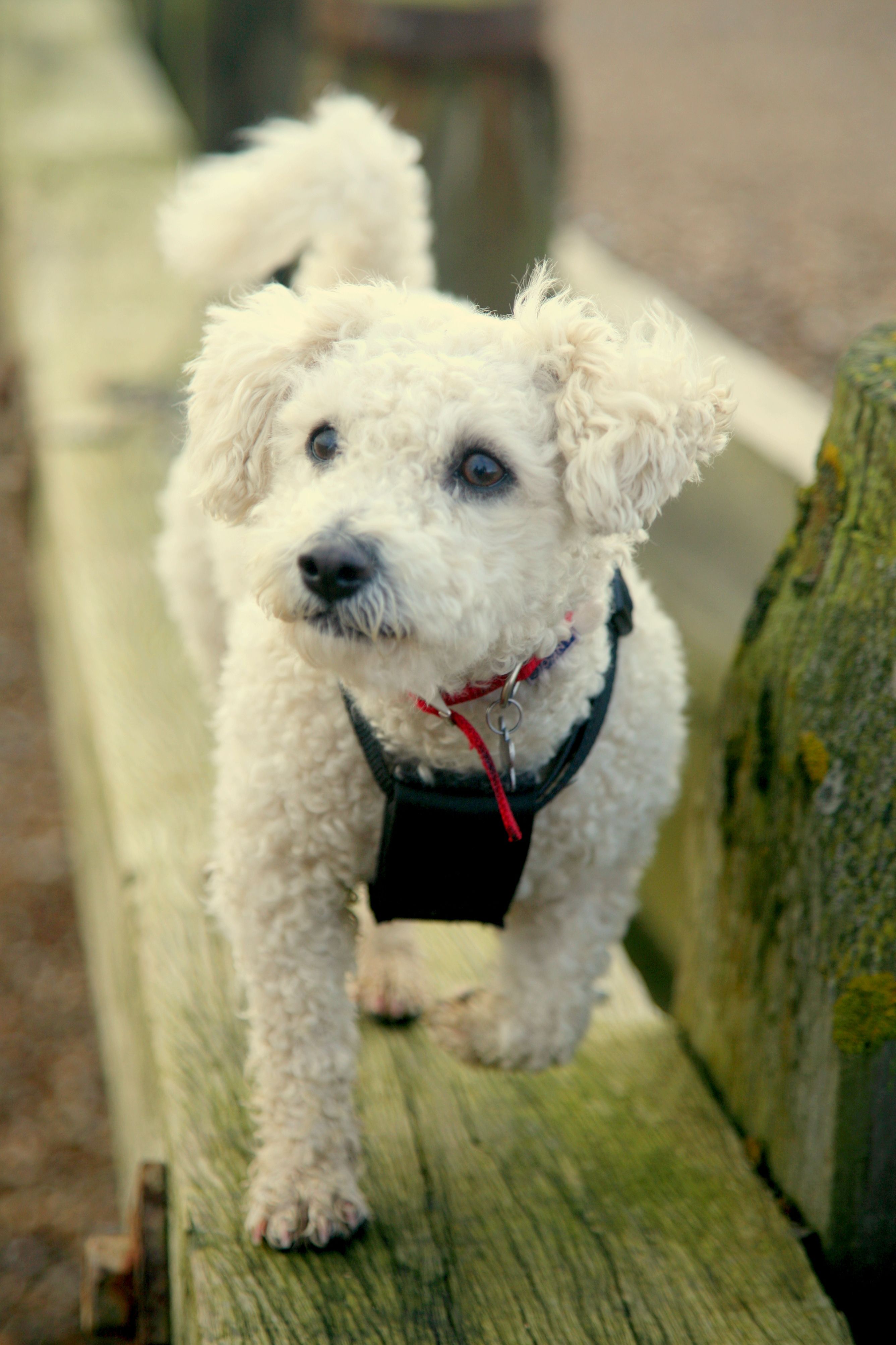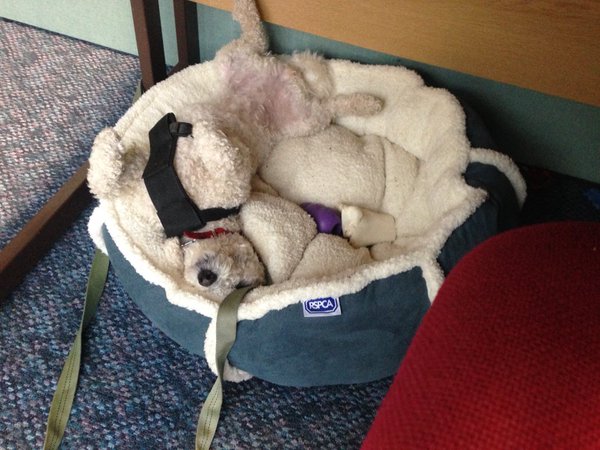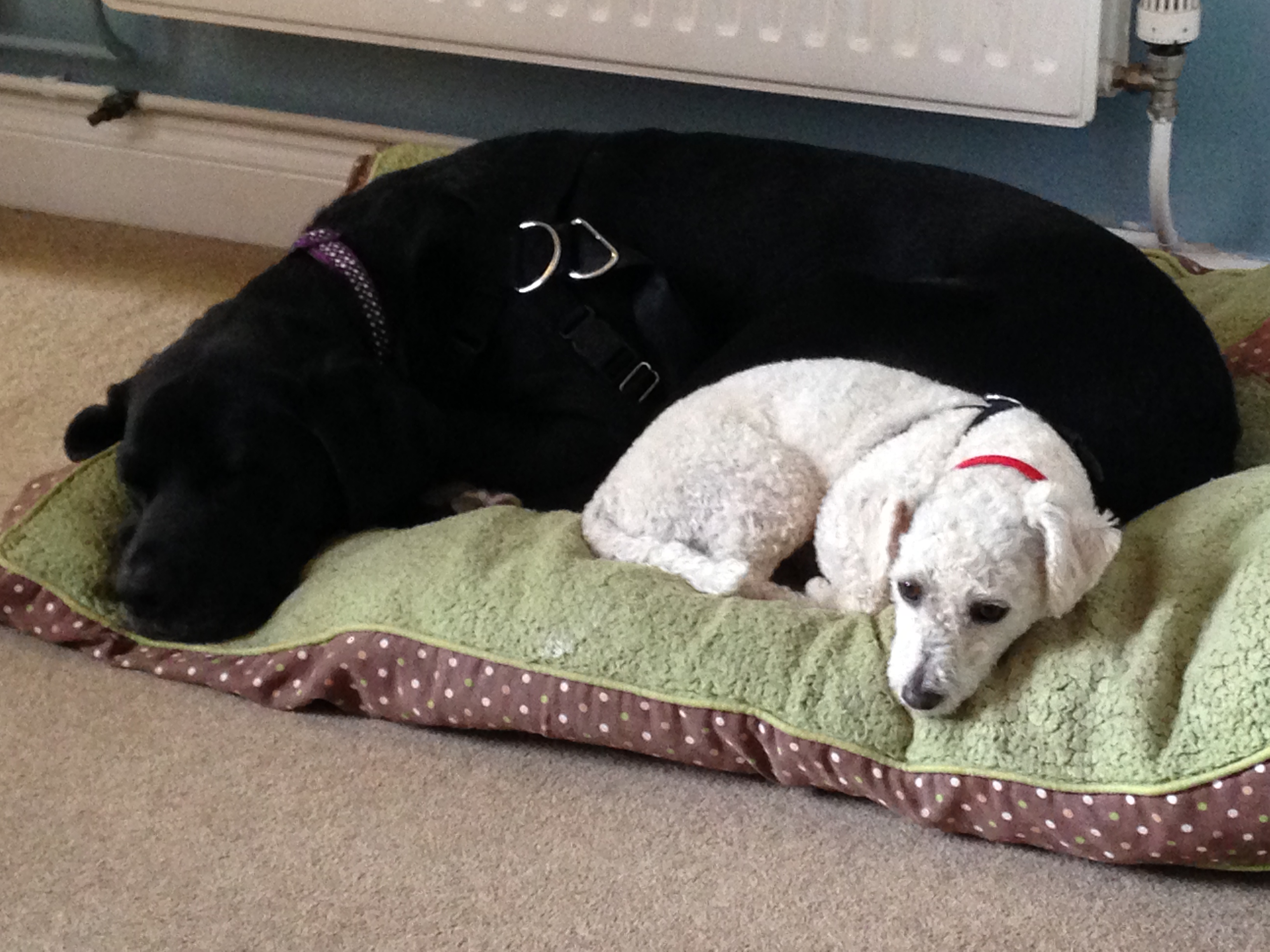This guest post was written by Dr Samantha Gaines BSc (Hons) MSc, Head of Companion Animals Department, RSPCA, and originally appeared here.
Please note – leaving a dog for more than 4 hours isn’t recommended. If you’re worried about leaving your dog, why not find a local, trusted dog sitter on DogBuddy.com?
Last September we welcomed Flo, a Bichon Frise cross, into our family. We were really excited to adopt an RSPCA dog and spent a long time preparing for her arrival. We had arranged to collect her whilst I had a couple of weeks off work and before my daughter started primary school. That way we could spend time settling her in and get her slowly used to being left on her own before she had to be left for any period of time.
However because of illness, Flo had to stay at the centre for veterinary treatment and this meant that when we did get her, she had to be left on her own within a few days.

Separation related behaviour – a messy business
The first time I left her I returned to poo and wee on the floor and she hadn’t touched her food-filled toy. The same thing happened the next day and I could also hear her barking and howling as I approached the house. I quickly realised that Flo was showing common signs of separation anxiety.
At this point I panicked. It was clear from her toileting, vocalising and refusing to eat that she really struggled when alone and was very unhappy. Although she had our other dog, Sidney, for company she wanted to be with people, so he didn’t help her feel less anxious.
Fortunately, separation-related behaviour (SRB) is treatable and with the right treatment, I knew I would soon be able to leave Flo on her own and not worry about her feeling anxious. Within days, I contacted Dr Emily Blackwell, a certified clinical animal behaviourist. She asked what Flo did when we left her alone, how she behaved when we were all present at home and what she was like in general. By asking lots of questions about Flo, my family and our circumstances, Emily was able to develop a structured treatment plan specifically for us.
Structured treatment plan

The aim of our plan was to teach Flo that being on her own wasn’t frightening. We started off teaching Flo to be relaxed on a special mat which we only used for training sessions. During these sessions, we stroked Flo to help her relax and gave her access to tasty treats. Over time she learnt that being on the mat meant that she got praise and rewards. Once she had mastered this, we then started moving away from Flo on the mat and eventually got to the point where we could leave her in a room alone without any signs of anxiety.
This then moved to a stage where we left the house for short periods of time and eventually we got to a point where she could be left for a few hours. At every stage when we left Flo, she had access to a Kong toy filled with her favourite food and we still use this when we go out and leave her. She now takes the Kong upstairs before we have even left.
Following the plan wasn’t difficult but to ensure Flo made good progress, it did require some discipline as we had to make sure that we trained Flo on most days. We also made sure that someone was with Flo at all times. Whilst Emily explained that it would be possible to do the behavioural treatment and still leave her alone at other times, it would be a much easier process if she wasn’t left at all during the training period.
Family dynamics

We also had to teach Flo to be less attached to me as she had developed a very strong bond almost straight away. If I left her with my husband she would get very distressed. To tackle this, Emily advised my husband to take responsibility for all the good things in Flo’s life so that she started associating him with fun things. So he took her for walks, fed her and even enrolled in a clicker training obedience course. This helped a lot and we quickly saw an improvement in her behaviour when I left her.
The difference in Flo’s behaviour has been tremendous and the sacrifices we made as a family have been more than worth it. She has been transformed from an anxious dog who was very frightened about being left alone to one who is happy and relaxed for a few hours. I couldn’t have done this without the help of a behaviourist so we are incredibly grateful for Emily’s advice and support in helping Flo.
Research has shown that rescue dogs are no more likely to develop separation-related behaviour than other dogs. Teaching them that being alone is fun is a good way of preventing any separation problems from developing.
Please note – leaving a dog for more than 4 hours isn’t recommended. If you’re worried about leaving your dog, why not find a local, trusted dog sitter on DogBuddy.com?